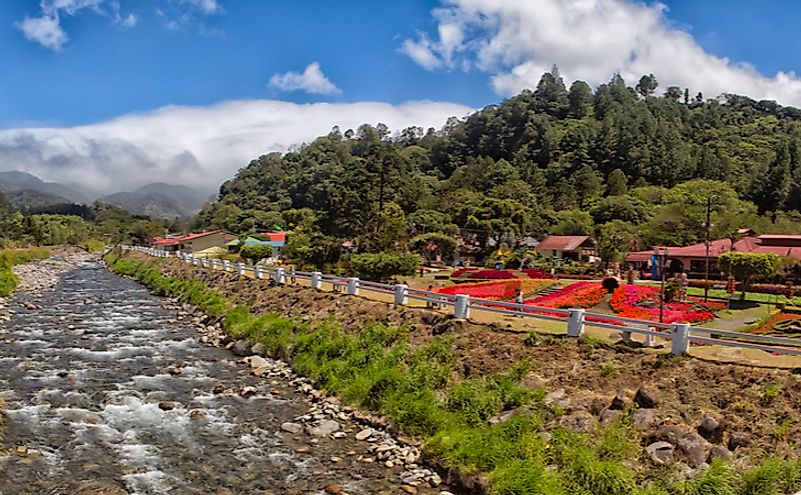What Are The Major Natural Resources Of Panama?

Panama is a Central American state whose capital city is Panama. It is uniquely positioned between South and North America which makes it an important passageway between the continents. The Panama Canal is a great sight to behold as it showcases a magnificent feat of human engineering as it connects the Pacific Ocean and the Atlantic Ocean. Officially known as the Republic of Panama, Panama’s population is roughly 4 million people. Its total land area is 29,119 square miles. The economy of Panama is largely dependent on the mining, agriculture, and timber industries. Its GDP is $121.545 billion which is among the largest in the Americas.
Mineral Resources
Mining is the fastest growing sector in Panama with the value of mineral reserves estimated at $200 billion. The major minerals in the country include copper, gold, manganese, and iron. These minerals form part of the country’s exports which generate government revenue. Panama is famous for its possession of the 9th largest copper ore reserve in the world. Copper is utilized for various purposes including construction, and conduction of heat and electricity. In 2014, Panama had 25,000 ounces of silver, 50 billion pounds of copper, 250 tons of molybdenum, and 12 million ounces of gold reserves. The huge amounts of copper reserves have led to the expectation than Panama will soon engage in the world’s largest open-pit copper developments and exports. Hydropower is also a major natural resource in Panama as it supplies 63% of all electricity needs of households, companies, and government institutions.
Forestry
43.6% of Panama land is forest land. Mahogany trees are the tree species that mainly grow in these forests. The ages range from 80-100 years for most of the forests. On the other hand, most of the trees that are planted are mainly teak and pine. Mahogany is an expensive wood because it is a hardwood. Due to its durability, most of the mahogany trees are exported. The forests in Panama are majorly utilized for logging. Some of the major timber companies in the country are Panama Teak Forestry, Panama and Latin America Natural Resources, Plywood Orozco, and Favorita Trading Company among others. These companies have over 41 sawmills which result in an annual output of 60,000 cubic meters of forest products.
Land And Agriculture
30% of Panama land is devoted to farming since agriculture is one of the industries that significantly contributes to the country’s economy. In 2013, the estimated labor skills force in the agricultural sectors was 17% of the country’s total labor force. The same year, the export of bananas, watermelons, sugar, and pineapples was valued at $18.87 billion. Generally, about 17% of Panama’s GDP is from its agriculture sector. Farmers grow corn, sugarcane, watermelons, rice, cocoa beans, pineapples, potatoes, coconuts, soybeans, vegetables, coffee, and bananas. Coffee worth 15.1 million was exported to Europe, Canada, and Asia in 2007. One of the factors that have greatly contributed to the good yield in agriculture is the country’s tropical climate which is favorable for farming. Most of the farmers are subsistence farmers who grow crops for consumption by their households. Rice is the staple food of Panamanians. However, rice yields are not enough to cater to the country’s needs. In 2000/2001, the total production of rice was 269,500 tons which barely met the local consumption needs. Consequently, the government is forced to import rice. Although subsistence farming is prevalent, some private landowners engage in large scale farming such as Chiriqui Land Company, Dole Foods, and Del Monte Corporation. Chiriqui Company is the leading exporter of bananas in Panama.
Livestock Rearing
Panama’s main livestock products include pork, veal, beef, and chicken. In 1997, there were 1,362,000 heads of cattle in the country. Out of this number, 320,803 heads were slaughtered whereas 5,280 heads were exported. The country exported 7.8 million worth of beef products that year. Regarding poultry, Panama is known for having the highest rate of chicken consumption in Latin America. In 1997 alone, the country imported $900,000 eggs for incubation. 41 million birds are slaughtered in Panama annually and an equivalent of 0.4 million birds are exported. The country produces 500,000 commercial eggs daily. Farmers use imported corn to feed both livestock and poultry.
Fishing
Panama is a prime location for both offshore and inland fishing due to its proximity to two massive water bodies. Shrimps and prawns are the most common seafood caught in the Pacific Ocean. Shrimp is both sea-caught and farm-raised. Over 40 shrimp ponds, covering 9,000 hectares of land, exist to supplement the offshore fishing. The country employs highly efficient technology as well as excellent management practices in shrimp farming. In 1998, the value of shrimp exports was $165 million. The Malaysian giant shrimp is the most popular species of shrimp. Most of the shrimp farming is done by private companies.











